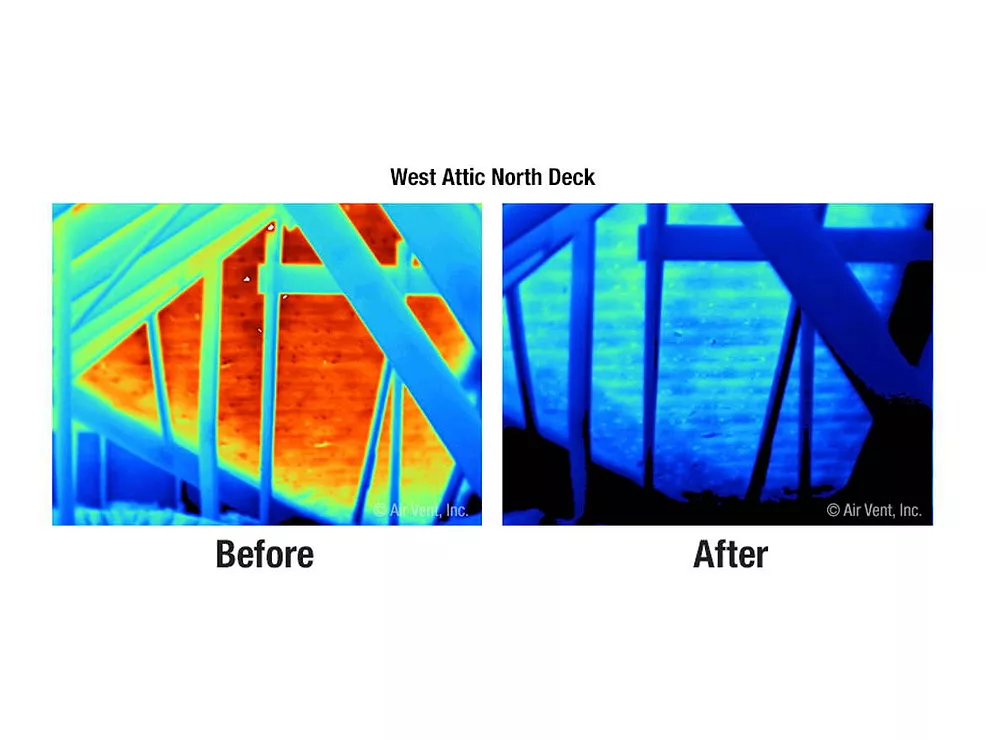Guest Column: Securing Storm Successes
Increased call volume is a storm side effect that
every roofer looks forward to. However, most of those calls will also involve
another element that can impact your success after a storm - insurance
companies.

Increased call volume is a storm side effect that every roofer looks forward to. However, most of those calls will also involve another element that can impact your success after a storm - insurance companies.
With a mother who owned her own insurance company before founding our family roofing company, I’ve seen the inner workings of both firsthand. And while some contractors get a little nervous when they are forced to deal with an insurance company, if you know the ins and outs of dealing with adjusters, there is a great deal of potential in insurance claims. The secret comes in creating a win-win-win scenario where the homeowner, the insurance company, and you all benefit.
In fact, we’ve been using that triple win formula to help homeowners solve their storm-inflicted roofing challenges for more than 20 years. Often, it’s the ability to provide answers and options that puts the homeowner at ease when we discuss an insurance claim with them because more often than not, homeowners know even less about dealing with insurance companies than most contractors do. For that reason, without the right guidance, they may wind up with a new roof for their home after a storm that is not what they had envisioned for their home.
To help your clients, you need to know the facts about negotiating with and working with insurance companies so that you can advocate for what the client wants and so that you’re approved for the work. Accomplishing that takes some practice and it takes some skill.
 That skill was what I shared with my fellow
members of Roofers’ Success International at our recent Expo in Las Vegas. In fact, the
presentation was part of a three-day in-depth course that I teach for Success Academy entitled “Make Greater Profits
with Insurance Claims.” RSI members have full access to the content of the
course in addition to all of the other tools and programs that RSI has
developed to help us succeed, and in this column, I wanted to share just a few
of these ideas with you as well.
That skill was what I shared with my fellow
members of Roofers’ Success International at our recent Expo in Las Vegas. In fact, the
presentation was part of a three-day in-depth course that I teach for Success Academy entitled “Make Greater Profits
with Insurance Claims.” RSI members have full access to the content of the
course in addition to all of the other tools and programs that RSI has
developed to help us succeed, and in this column, I wanted to share just a few
of these ideas with you as well.
But first, I need to stress that with this information, I’m not advising you to seek out insurance work. This is meant to assist you when insurance work does come your way. Plus, this is in no way meant to promote the practice of “storm chasing.” The purpose of these strategies is to help roofing contractors assist the homeowner, while many “storm chasers” rarely have the homeowner’s best interest in mind.
When you do have a call that involves an insurance claim, it is a golden opportunity to be an expert in your trade by knowing more than most adjusters and other contractors around you.
Filing a successful claim actually involves four phases:
• Gaining the homeowners trust and agreement.
• Conducting a successful inspection.
• Developing the right estimate.
• Conducting a successful negotiation.
Establishing Trust
There are five steps involved in gaining the homeowner’s trust. They are:
1. Building trust with the homeowner so they allow you to represent them. Once you determine that a call is an insurance claim, you should respond with your Trusted Insurance Authority Statement. This is your explanation of why your client should allow you to represent them to the insurance company.
2. Securing a form that will allow you to represent them and how to collect the deductible and Actual Cash Value. If the client trusts you, there are only two reasons they will not move forward with this form - they either want to keep all of the money and do none of the work or they want to find someone cheaper to do the work and keep the remainder.
3. Collecting the information you need from the homeowner and how to use it. Have the client complete the necessary forms and inspect a copy of their policy.
4. Reviewing the homeowner’s policy to determine what type of policy and coverage they have. Their coverage will have a huge impact on the type of work you can get approved through the insurance company.
5. Determining what type of adjuster you’ll be dealing with. Get to know the adjuster assigned to your claim. Do they work for the insurance company or are they a third-party adjuster? Who do they report to and what can they approve? Remember, if you don’t have the type of adjuster you’d like handling your claim, you can always request a new one.
Preparation Is Essential
Remember, earning the homeowner’s trust is just the start of the process, and it is also the tip of the iceberg when it comes to dealing with homeowners and insurance companies over claims. But with this bit of information, the next time a storm hits your market, you’ll be on your way to crafting a win-win-win and securing another storm success for your company.

Increased call volume is a storm side effect that every roofer looks forward to. However, most of those calls will also involve another element that can impact your success after a storm - insurance companies.
With a mother who owned her own insurance company before founding our family roofing company, I’ve seen the inner workings of both firsthand. And while some contractors get a little nervous when they are forced to deal with an insurance company, if you know the ins and outs of dealing with adjusters, there is a great deal of potential in insurance claims. The secret comes in creating a win-win-win scenario where the homeowner, the insurance company, and you all benefit.
In fact, we’ve been using that triple win formula to help homeowners solve their storm-inflicted roofing challenges for more than 20 years. Often, it’s the ability to provide answers and options that puts the homeowner at ease when we discuss an insurance claim with them because more often than not, homeowners know even less about dealing with insurance companies than most contractors do. For that reason, without the right guidance, they may wind up with a new roof for their home after a storm that is not what they had envisioned for their home.
To help your clients, you need to know the facts about negotiating with and working with insurance companies so that you can advocate for what the client wants and so that you’re approved for the work. Accomplishing that takes some practice and it takes some skill.

But first, I need to stress that with this information, I’m not advising you to seek out insurance work. This is meant to assist you when insurance work does come your way. Plus, this is in no way meant to promote the practice of “storm chasing.” The purpose of these strategies is to help roofing contractors assist the homeowner, while many “storm chasers” rarely have the homeowner’s best interest in mind.
When you do have a call that involves an insurance claim, it is a golden opportunity to be an expert in your trade by knowing more than most adjusters and other contractors around you.
Filing a successful claim actually involves four phases:
• Gaining the homeowners trust and agreement.
• Conducting a successful inspection.
• Developing the right estimate.
• Conducting a successful negotiation.
Establishing Trust
There are five steps involved in gaining the homeowner’s trust. They are:
1. Building trust with the homeowner so they allow you to represent them. Once you determine that a call is an insurance claim, you should respond with your Trusted Insurance Authority Statement. This is your explanation of why your client should allow you to represent them to the insurance company.
2. Securing a form that will allow you to represent them and how to collect the deductible and Actual Cash Value. If the client trusts you, there are only two reasons they will not move forward with this form - they either want to keep all of the money and do none of the work or they want to find someone cheaper to do the work and keep the remainder.
3. Collecting the information you need from the homeowner and how to use it. Have the client complete the necessary forms and inspect a copy of their policy.
4. Reviewing the homeowner’s policy to determine what type of policy and coverage they have. Their coverage will have a huge impact on the type of work you can get approved through the insurance company.
5. Determining what type of adjuster you’ll be dealing with. Get to know the adjuster assigned to your claim. Do they work for the insurance company or are they a third-party adjuster? Who do they report to and what can they approve? Remember, if you don’t have the type of adjuster you’d like handling your claim, you can always request a new one.
Preparation Is Essential
Remember, earning the homeowner’s trust is just the start of the process, and it is also the tip of the iceberg when it comes to dealing with homeowners and insurance companies over claims. But with this bit of information, the next time a storm hits your market, you’ll be on your way to crafting a win-win-win and securing another storm success for your company.
Looking for a reprint of this article?
From high-res PDFs to custom plaques, order your copy today!


